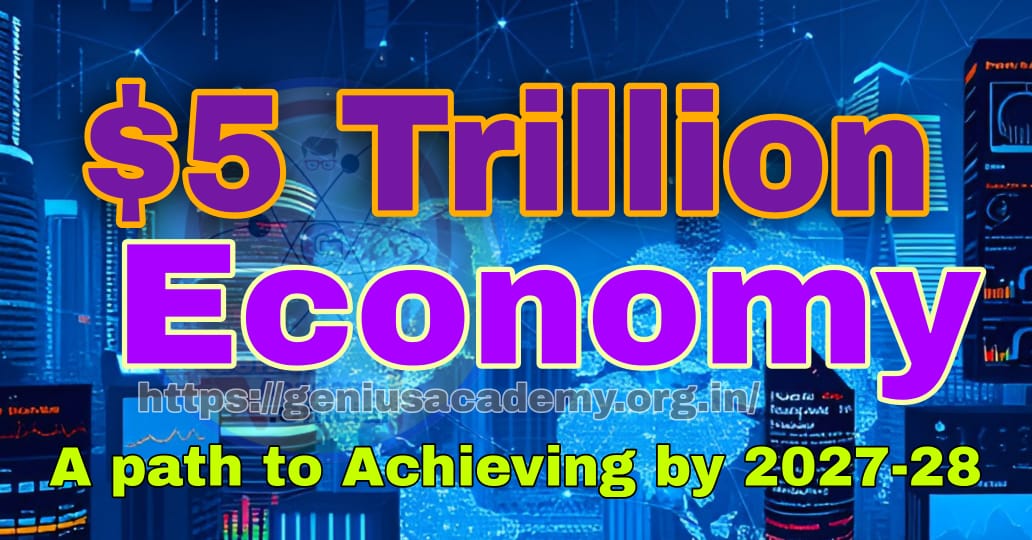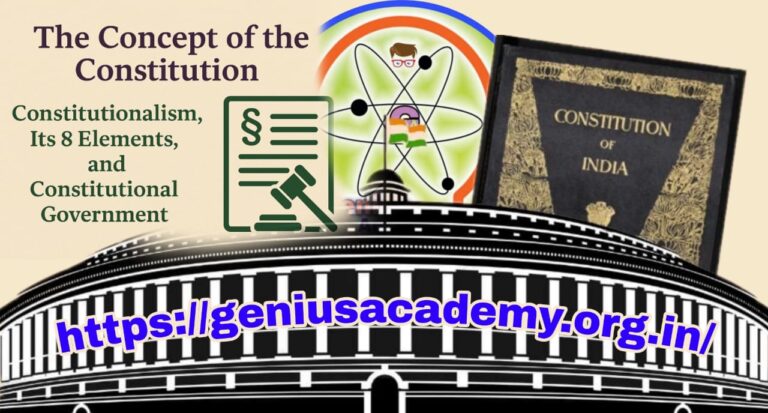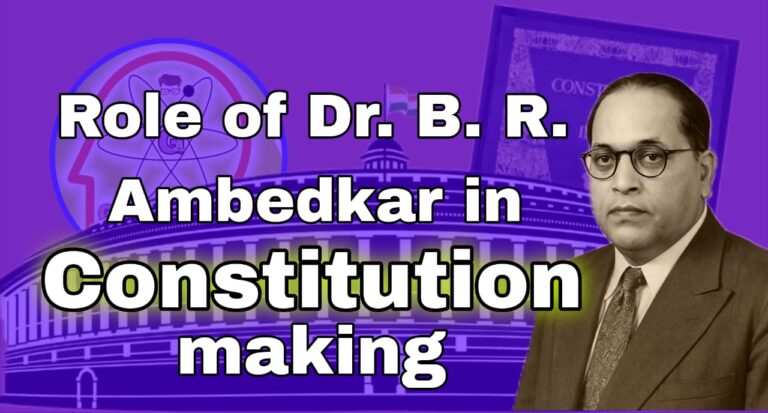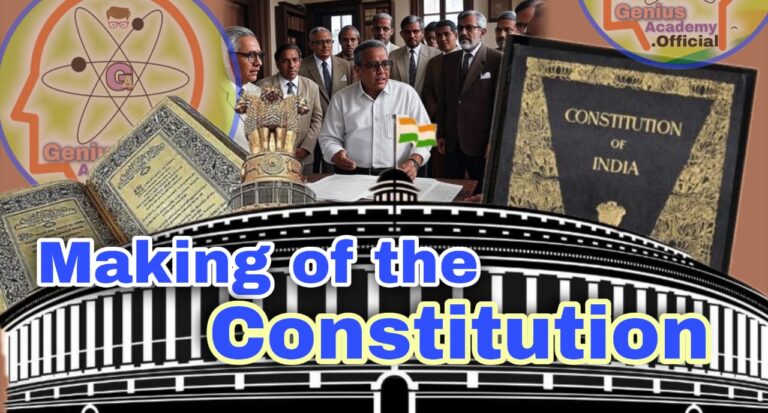Path to Achieving a $5 Trillion Economy: A Comprehensive Analysis
India is on a transformative journey to achieve its ambitious $5 trillion economy target by 2027-28. This goal, envisioned by policymakers and supported by strategic reforms, hinges on coordinated efforts across key sectors, including employment generation, skills development, infrastructure expansion, and digital innovation.
Current Economic Landscape of India
- Economic Standing: As of 2024, India ranks as the fifth-largest economy globally, with a GDP of approximately $3.7 trillion. The Finance Ministry projects this figure will rise to $5 trillion by 2027-28, making India the third-largest economy.
- Demographic Advantage: India’s youthful population is a key driver of its economic growth, presenting opportunities for innovation, productivity, and entrepreneurship.
Vital Determinants of a $5 Trillion Economy
1. Economic Reforms
- Goods and Services Tax (GST): Simplified tax structures to enhance compliance.
- Insolvency and Bankruptcy Code (IBC): Improved resolution for distressed assets.
- Corporate Tax Reduction: Attracting domestic and foreign investments by lowering tax rates.
2. Digital Economy and Fintech
- Digital India: Fostering digital literacy and financial inclusion.
- Fintech Growth: Accelerating financial transactions through technological innovation.
3. Infrastructure Development
- Union Budget 2023-24 allocated ₹10 lakh crore for capital investment (3.3% of GDP).
- National Infrastructure Pipeline (NIP): Planned investment of ₹111 lakh crore across sectors by 2025.
4. Energy Transition and Climate Action
- Renewable energy capacity goal: 450 GW by 2030.
- National Action Plan on Climate Change (NAPCC): Commitment to sustainable practices.
5. Employment and Skilling
- Generating job opportunities and enhancing workforce skills to drive productivity.
- Initiatives like PM Internship Scheme 2024 aim to provide one crore internships, improving employability.
Challenges on the Path
1. Fiscal Deficit
- Balancing fiscal constraints with adequate investments in critical sectors remains a challenge.
2. Employment Generation
- Addressing unemployment in a rapidly growing workforce.
3. Global Economic Uncertainties
- Navigating geopolitical tensions, fluctuating commodity prices, and inflationary pressures.
4. Skills Development
- Ensuring the accessibility and quality of training programs, especially in rural and remote areas.
Key Government Initiatives
1. Economic Reforms
- GST Implementation: Unified tax structure reducing cascading taxes and enhancing business efficiency.
- IBC: Resolved over 5,000 insolvency cases, ensuring better credit availability.
- Corporate Tax Cuts: Rates reduced from 30% to 22% for existing companies and 15% for new manufacturers.
2. Infrastructure Development
- Capital Investment Focus: Promoting public-private partnerships in transport, housing, and energy sectors.
- National Infrastructure Pipeline: Enhances connectivity and logistics for smoother business operations.
3. Digital Economy
- UPI (Unified Payments Interface): Revolutionizing digital payments and financial inclusion.
- e-Governance: Simplifying administrative procedures for businesses and citizens.
4. Renewable Energy and Climate Commitments
- Solar energy projects under International Solar Alliance (ISA).
- Energy-efficient programs like UJALA and PAT schemes.
5. Production Linked Incentive (PLI) Scheme
- Boosting Domestic Manufacturing: Covers 14 sectors to reduce import dependency and enhance exports.
- Sectoral Focus: Electronics, pharmaceuticals, and automobiles benefit the most.
Employment and Skilling: The Key to Economic Growth
1. Bridging the Skills Gap
- Aligning academic curriculum with market needs.
- Encouraging vocational education in partnership with industries.
2. Technological Adaptation
- Emphasis on AI, Internet of Things (IoT), and robotics training.
- Upskilling initiatives to keep the workforce competitive in the global market.
3. Industry Collaboration
- Sector Skill Councils (SSCs) and National Skill Development Corporation (NSDC) ensure training aligns with industry requirements.
Strategies for Achieving the Target
1. Focus on Innovation
- Encouraging R&D in emerging sectors like biotechnology, AI, and green energy.
2. Inclusive Growth
- Ensuring economic benefits are equitably distributed across rural and urban regions.
- Promoting MSMEs as engines of employment and innovation.
3. Policy Simplification
- Reducing bureaucratic hurdles for startups and foreign investors.
- Clear land acquisition and labor policies to boost industrial growth.
Data Visualization and Infographics
Pie Chart: GDP Sectoral Contributions (2024)
- Services: 54%
- Industry: 29%
- Agriculture: 17%
Bar Graph: PLI Scheme Impact on Exports (2020-2024)
- Electronics: 35% growth
- Pharmaceuticals: 22% growth
- Automobiles: 15% growth
Key Recommendations
1. Encouraging Private Investment
- Strengthen public-private partnerships in infrastructure, healthcare, and education.
2. Rural Development Focus
- Enhance connectivity and digital access in rural areas.
- Promote agro-industries and rural entrepreneurship.
3. Strengthening MSMEs
- Provide low-interest loans and tax benefits.
- Offer technological support and market linkages.
4. Green Economy Transition
- Expand renewable energy projects to reduce carbon footprint.
- Incentivize industries to adopt sustainable practices.
Conclusion
Achieving a $5 trillion economy is not merely an aspiration but a necessity to solidify India’s position as a global economic leader. With the right mix of policies, robust governance, and collective efforts, India can successfully overcome challenges and realize its full economic potential. The focus must remain on inclusive growth, technological innovation, and skill development to ensure sustainable and equitable progress.
Daily Mains Practice Questions
UPSC (CSE) Mains Questions Based on “Achieving the $5 Trillion Economy”
General Studies Paper II: Governance, Polity, and International Relations
| [Q1.] Discuss the role of coordinated efforts in skill development and employment generation for achieving India’s $5 trillion economy goal. How can public-private partnerships be leveraged in this context? (250 words) |
| [Q2.] Evaluate the effectiveness of government initiatives like the Production Linked Incentive (PLI) scheme and ‘Make in India’ in fostering domestic manufacturing and exports. Suggest ways to enhance their impact. (250 words) |
| [Q3.] “Digital economy is a cornerstone of India’s economic growth strategy.” Examine the measures taken under the ‘Digital India’ initiative to bridge the digital divide and enhance financial inclusion. (150 words) |
| [Q4.] To what extent can renewable energy and sustainable practices help India achieve its $5 trillion economy target? Discuss with examples. (250 words) |
| [Q5.] Critically analyze the challenges posed by global economic uncertainties, such as geopolitical tensions and inflation, in India’s journey towards a $5 trillion economy. (250 words) |
General Studies Paper III: Economic Development, Technology, and Environment
| [Q6.] Examine the impact of infrastructure development on economic growth, with specific reference to the National Infrastructure Pipeline and the Union Budget’s capital investment outlay. (250 words) |
| [Q7.] Discuss the role of skilling and upskilling programs in bridging the employability gap in India. How can technological advancements aid this effort? (250 words) |
| [Q8.] Highlight the fiscal challenges faced by India in its bid to achieve a $5 trillion economy. What fiscal reforms and policies can ensure sustainable growth? (250 words) |
| [Q9.] Explain the significance of initiatives like the Insolvency and Bankruptcy Code (IBC) in improving India’s ease of doing business. Analyze its contribution to economic growth. (150 words) |
| [Q10.] “A strong MSME sector is critical to achieving India’s $5 trillion economy goal.” Discuss the challenges faced by MSMEs and suggest measures to address them. (250 words) |
FAQs on “Achieving a $5 Trillion Economy”
1. Why is the $5 trillion economy target significant for India?
Answer:—
The target symbolizes India’s aspiration to become a major global economic player, improve living standards, and generate inclusive growth by leveraging its demographic dividend and strategic reforms.
2. What sectors will contribute most to India’s $5 trillion economy goal?
Answer:—
- Services: With a current contribution of ~54% to GDP, this sector will continue to dominate, especially IT, tourism, and healthcare.
- Manufacturing: Initiatives like PLI and ‘Make in India’ aim to increase the manufacturing share to 25% of GDP.
- Agriculture: Focus on modernization, agro-industries, and exports will improve rural incomes.
3. What challenges could derail India’s $5 trillion economy ambition?
Answer:—
- High fiscal deficits.
- Lack of adequate job creation for the growing workforce.
- Skills gap due to misalignment between industry needs and academic training.
- Geopolitical tensions and inflationary pressures.
4. What role does infrastructure play in achieving this goal?
Answer:—
Infrastructure investment catalyzes economic activities, attracts private investments, and boosts productivity. Projects under the National Infrastructure Pipeline aim to enhance connectivity, logistics, and urban development.
5. How is digital transformation influencing India’s economic growth?
Answer:—
Digital initiatives like UPI and Aadhaar-based services have improved financial inclusion and administrative efficiency. Moreover, fintech startups and innovations drive global competitiveness in financial services.
6. What are the key government initiatives supporting the $5 trillion goal?
Answer:—
- Goods and Services Tax (GST)
- Insolvency and Bankruptcy Code (IBC).
- Digital India and PLI schemes.
- Renewable energy projects and National Infrastructure Pipeline.
7. How can the workforce be prepared for this economic transition?
Answer:—
Workforce readiness can be achieved through skill alignment with industry needs, technological adaptation, vocational training, and industry-government collaboration under schemes like PM Internship 2024.
8. What is the role of climate action in economic growth?
Answer:—
Climate-resilient policies and renewable energy projects reduce dependency on fossil fuels, improve energy security, and attract green investments, contributing to sustainable development and economic growth.





